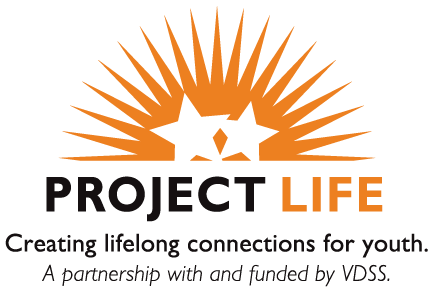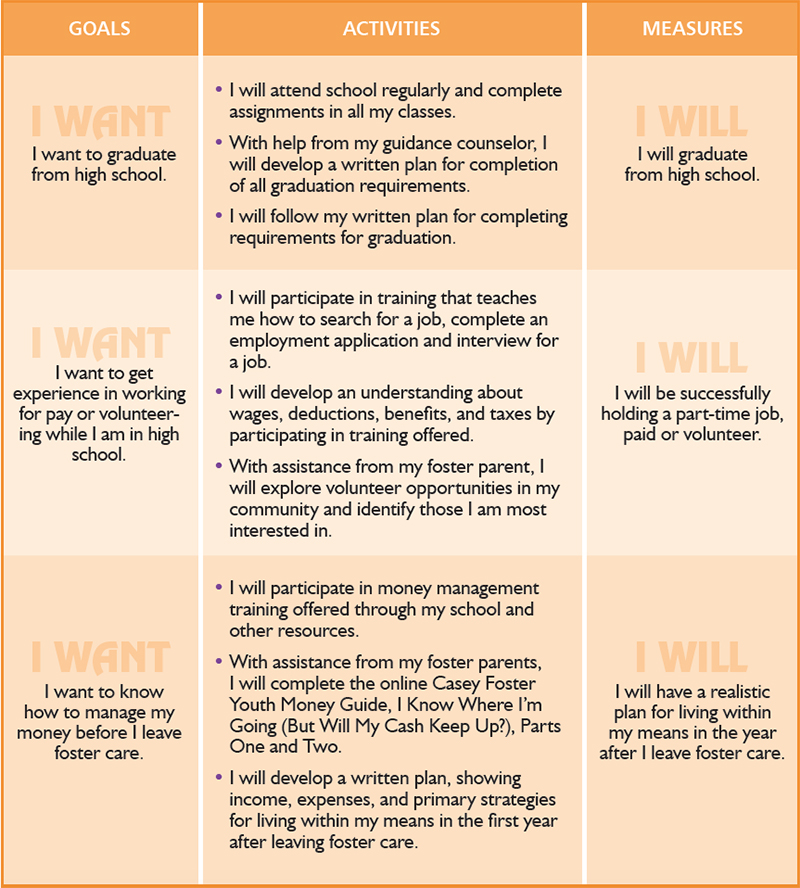CASEY LIFE SKILLS TRANSITION PLAN
“The Transition Plan is set by the youth for himself and not by some random person. He knows what small goals he needs to achieve to make the larger goal. In the end your weaknesses can become your strengths.”
KRISTEN, Project LIFE Participant
Your Plan is based on a comprehensive independent living needs assessment conducted to assess your strengths and needs in preparing for adulthood. The first IL assessment is done within 30 days after your 14th birthday (or, for youth entering foster care after age 14, within 30 days after you entered care). The assessment is then re-administered every 12 months.
Workers can visit Casey.org for more information about the Casey Life Skills Assessment (CLSA) and to get the tool kit.
This assessment can be found at the website above or also here: https://www.vaprojectlife.org/wp-content/uploads/2022/07/2021-CLS-Standard-Assessment.pdf
It can be completed on a computer or on paper in 30 to 40 minutes. Your service worker will provide you with and help you complete the assessment. You will use the results to develop your IL Transition Plan.
The CLSA assesses life skills in nine different areas:
- Daily Living Skills (meal planning, cleaning and food storage, home maintenance and computer and internet basics)
- Self-Care Skills (healthy physical and emotional development such as personal hygiene, taking care of your health and pregnancy prevention)
- Relationship and Communication (developing and sustaining healthy relationships, cultural competency and permanent connections with caring adults)
- Housing, Money Management, and Transportation (banking and credit, finding and keeping affordable housing, budgeting and living within one’s means)
- Work and Study Life (basics of employment, legal issues, study skills and time management)
- Career and Education Planning (planning for career postsecondary education pertinent to older youth)
- Civic Engagement
- Navigating the Child Welfare System
- Looking Forward (your level of confidence and feelings important to success)
Your IL Service and Transition Plan
Your service worker is required to develop with you a written Independent Living Services and Transition Plan that specifies the independent living services, activities, and supports that will be provided to help you transition to adulthood. The plan is to be:
- Youth-driven
- Based on your IL needs assessment
- Developed through a team process
- Also, if you have an Individual Education Program (IEP) at school, the plan is to be coordinated with your IEP.
Youth-driven means you have a central role in service planning and decision making. Your involvement not only makes the plan truly yours, but gives you opportunities to increase your self-awareness and to learn how to develop goals, use networks, and resolve problems – all essential skills for adulthood! The service planning is completed in collaboration with your service worker and members of your team. Your worker and team will help you:
- Understand your responsibility for developing and achieving a plan.
- Develop your personal goals.
- Identify your strengths, interests, and needs.
- Use these goals, strengths, and interests to design services, use networks, and access services and resources to meet your needs.
- Achieve permanency.
- Develop the skills necessary for self-sufficiency and interdependency.
- Manage the transition to adulthood.
- Follow up to ensure success.
Elements of your Plan
Strengths and Areas for Growth
Your plan will be developed soon after you complete your IL Needs Assessment so that you can use what you learned through the assessment process in developing your plan. Your IL Needs Assessment will show you where your strengths and weaknesses are in each of the eight life skills areas.
Setting Priorities
Your IL Transition Plan does not have to address all eight areas of life skills. You will want to focus your Plan on the areas of greatest need and importance for you at this point in time. After you achieve your initial goals, you can move on to others.
Goals, activities, and measures
You will be setting goals, choosing activities, and determining how you will measure your achievements.
Goals are what you want to achieve over a longer period of time.
Activities are the shorter-term steps you will take to reach your goal.
Measures are how you will know when you achieve your goal.
Here are some examples of goals, related activities, and measures. These are just examples intended to give you a better idea about how goals, activities and measures are related. Remember, your plan should reflect your goals!
Responsible parties
Although this is your plan, your team and others will be responsible for helping you and providing whatever support they agree to provide in your plan. This element of your plan will list what you have agreed to do and what others have pledged to do to assist you.
Monitoring progress
You and your service worker will review your progress in achieving the goals on a regular basis, and your IL Assessment and Plan will be officially updated every 12 months for as long as you continue to receive IL services. When you review and update your plan, you will report the status of your goals and activities. The status can be any of the following:
- Met activity/goal (you will report the date).
- Satisfactory progress.
- Needs more time/assistance.
- Activity/goal needs changing.
Signatures
The final element in your plan is the area where you, your service worker, your caregiver(s), and other members of your team sign.
When you and your team members sign, it means you agree with the plan and that everyone makes a commitment to work to complete all the activities they are responsible to complete.
More Resources
The Casey Life Skills Toolkit, which includes the full suite of CLS Assessments, Practitioners Guide and Resources
to Inspire Guide, is hosted at: www.casey.org/casey-life-skills/

